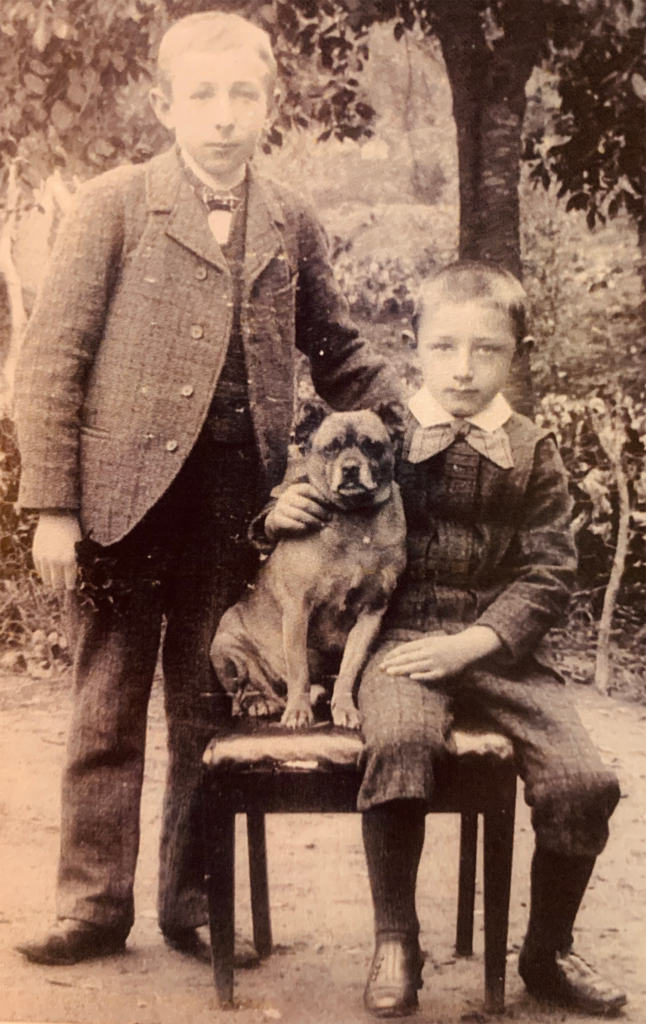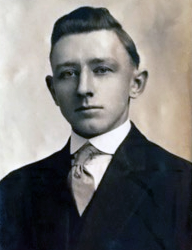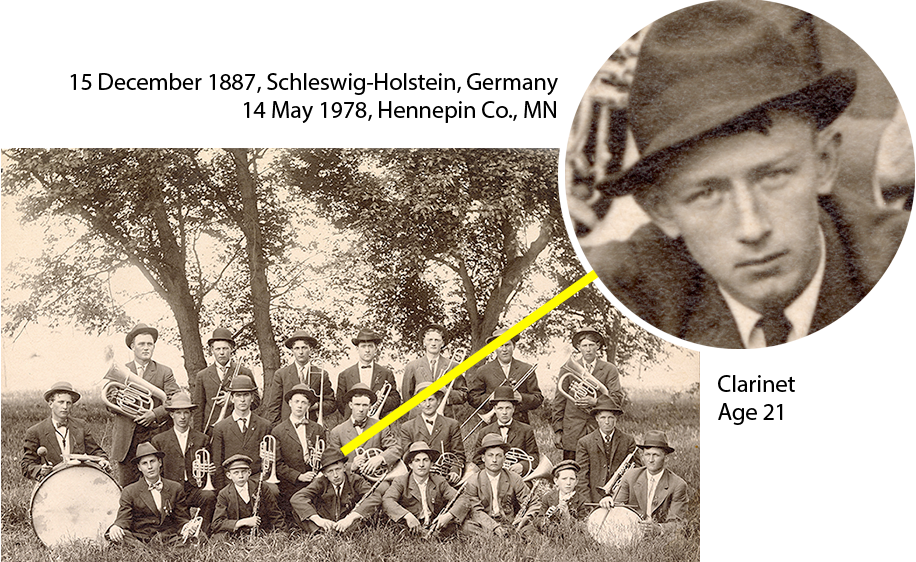
The life of Hans Henry “Hugh” Sievers is marked by complexity, adversity, and repeated recovery from challenging setbacks. He shows the kind of courage and initiative that one often finds in immigrants, but he also fell victim early in his professional life to other individuals’ financial manipulations and events beyond his control, followed by tough consequences. His is an interesting life, characterized by resilience in the face of early misfortune, as well as the need to start over — twice — before achieving success later in life.
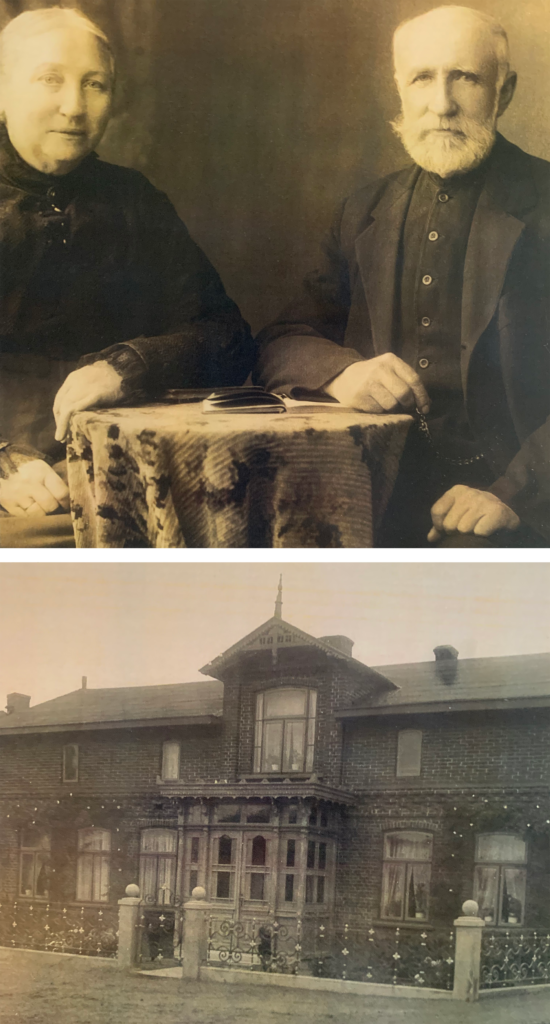
Hans is another of the Calumet German Band members who was born in Germany, as opposed to being born in Iowa to German immigrants. He was born in Erfde, Schleswig-Holstein, about 100 kilometers northwest of Hamburg, to Jürgen (Juergen) Hinrich Sievers (1851-1938) and Maria Dorothea Schacht (1856-1946).(1) At the age of 15, in June 1903, he emigrated alone from Hamburg to New York, declaring in the immigration statement that he would be joining an uncle (his mother’s brother) in Aspinwall (Crawford County), Iowa. Aspinwall is about 90 miles south of Calumet (O’Brien County).
It is unclear when Hans settled in Calumet, because he does not show up in the Iowa state census of 1905. But when he did arrive, he did so to join his brother, Dr. Claudius Laurentius Sievers (1876-1953), known as Claus or “C. L.” a physician and surgeon who operated the town hospital. C. L. Sievers had immigrated earlier, in 1890, and he himself had moved to Calumet from Ocheyedan (Osceola County), where he is known to have practiced medicine at the time of the 1900 census. A middle Sievers sibling, Margaretha (1880-1958), stayed in Germany, where she lived for the remainder of her life.
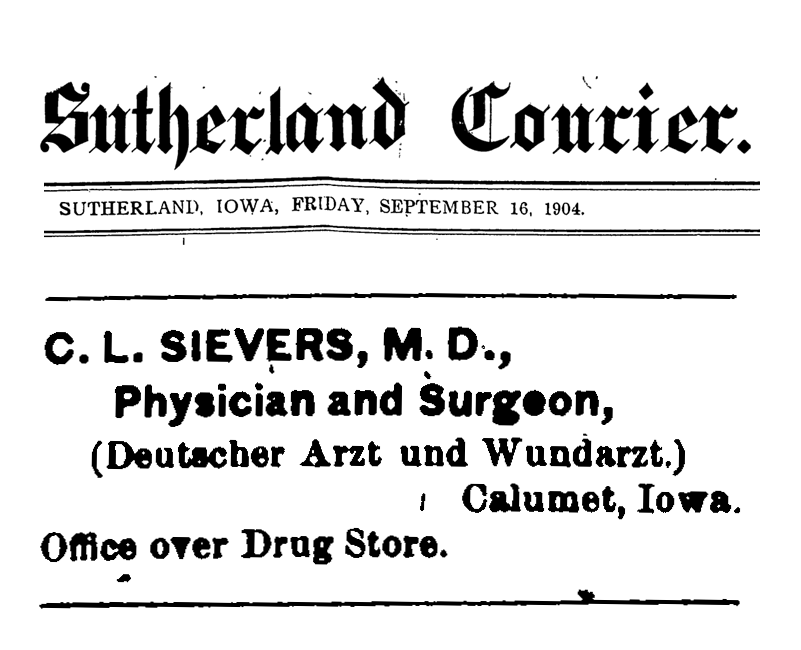
In June 1909, when the Calumet German Band photo was taken, Hans was a new husband; he and Ferrol Mintha Gillespie (1889-1913) had been married on 9 January, in Primghar. This made him one of only three band members who were married at the time of the photo. (The others were Ralph Edward Langley (1880-1977), married in August 1902, and Harry Detlaf Rochel (1883-1965), married in February 1907.)
Ferrol Gillespie had been born in Alleghany County, North Carolina, to Levi Gillespie (1854-1931) and Mary Jane Elizabeth Bryan (1856-1930). The Gillespie family (sometimes spelled as Gillispie, and in earlier generations spelled as Gallaspy) had moved from North Carolina in 1901 and settled on a farm near Sutherland.
Hans Henry and Ferrol Gillespie Sievers lived in the town of Calumet, where Hans worked as a clerk or salesman. Ferrol was evidently pregnant at the time of their marriage; their son, Buerdett Casimere(2) Sievers (1909-1987), would be born shortly after the band photo, on 15 August 1909. Hans’s brother C. L. Sievers was the attending physician at the birth.
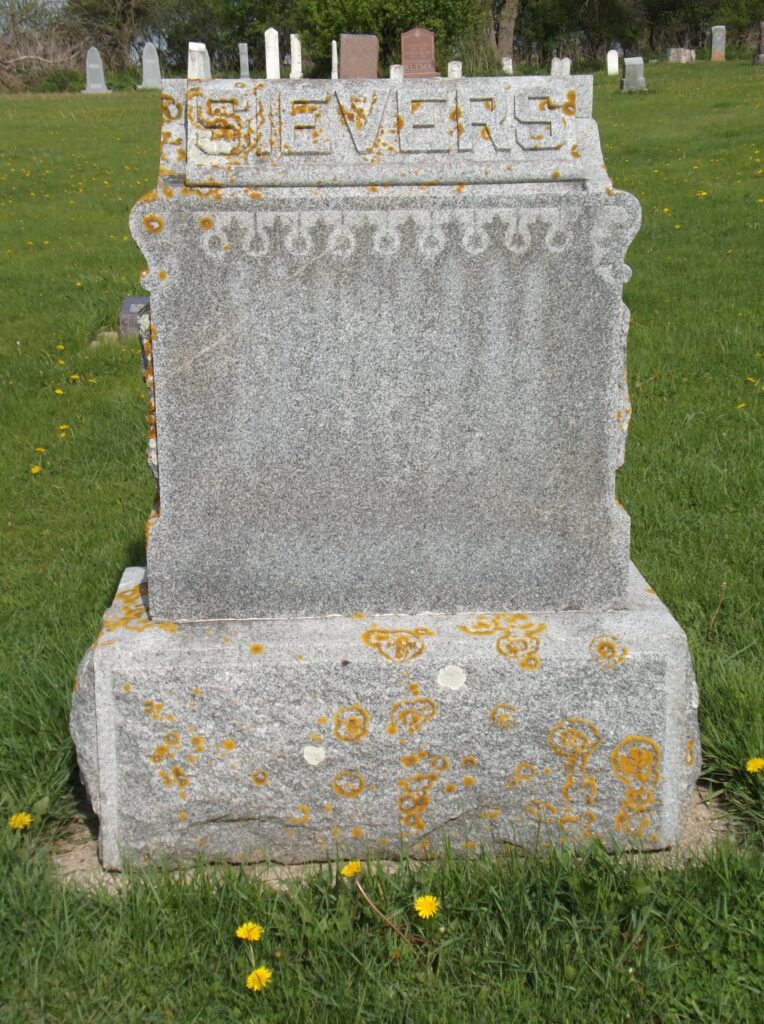
Sadly, however, Ferrol Gillespie Sievers died just three and a half years later, on 10 February 1913, at the age of 23.
Although the cause of her death is unconfirmed, it appears to have been pulmonary tuberculosis. Two clues can be found in The Sutherland Courier and its brief notes on comings and goings of local residents, typical of all small newspapers of the era. On 12 December 1912, the Courier noted that “Hans Sievers and son Burdette [sic] went to Ft. Dodge Saturday night, to visit Mrs. Sievers there.” And on 9 January 1913, one month before Ferrol’s death, another item stated that “Hans Sievers went to Fort Dodge Saturday, to visit Mrs. Sievers, who is in a sanitarium there.” The sanitarium would have been the Boulder Lodge Sanitarium, in Fort Dodge (Webster County, about 100 miles southeast of Calumet) which had been established in 1899 by J. W. Kime, MD, as the first tuberculosis sanitarium in Iowa. The large and regionally well-known facility, just north of the city, was in operation for a number of years.(3)
Following Ferrol’s death, Hans Sievers embarked on another big life change.
Sometime between her death in February 1913 and May 1914, he moved to Lamberton, Redwood County, Minnesota. There he remarried, on 5 May 1914, to Carolyn Seifert (1894-1968), daughter of Peter J. Seifert (1868-1935) and Catherina Woratschka (1874-1954). But during this time, his son had been taken into the household of the Gillespie grandparents, near Sutherland; Buerdett is shown as living with them as a 10-year-old at the time of the 1920 census. The story behind this turn of events — which on its face might seem to represent the near abandonment of a young child — is unexplained. Later events imply that it might have been only a matter of practicality.
Hans had a second son with his new wife Carolyn. Hugo “Hugh” Thomas Sievers (1916-1966) was born on 7 April 1916 in Lamberton, and the family moved to a nearby town, Belview, sometime in the next few years. In his World War I draft registration document, Hans reported working at this time as a real estate dealer with the North American Land and Colonization Company. He was naturalized in U.S. District Court in Minneapolis in December 1920.
The brothers Hans Henry and C. L. Sievers traveled together to Europe in July 1921, on a pleasure trip. Their passport applications indicated the intent to visit Switzerland and France, and C. L. stayed in Europe for two additional months, apparently also visiting Holland and Belgium. Whether they visited their parents is unclear; their passports do not state an intent to visit Germany, although the parents may have met the brothers elsewhere.
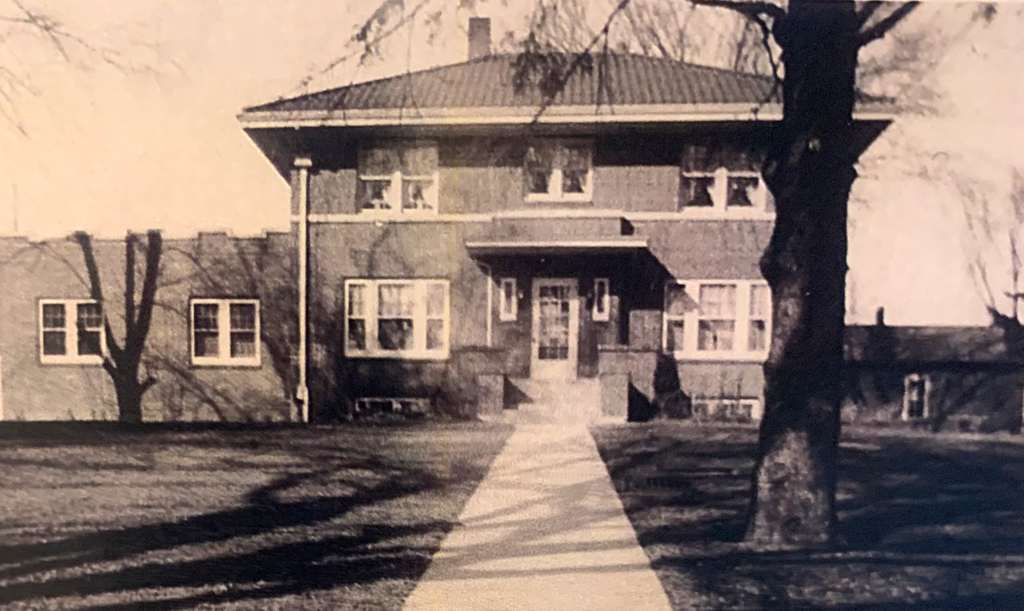
By the mid-1920s, the Hans Sievers family had moved to the town of Buffalo, Wright County, Minnesota, near Minneapolis, where Sievers established himself as a well-known and successful businessman. But it was here in Wright County that legal issues changed the family’s lives publicly and dramatically. In 1926, as part of a locally sensational string of court cases, Sievers was charged with and convicted of grand larceny in connection with what was portrayed as a plan to cause the failure of a local bank, the First National Bank of Buffalo, of which Sievers was stockholder and president. The state charged that Sievers aided and abetted Carl Melberg, the president of another local bank, the Maple Lake State Bank, in embezzling $23,000 from that institution. The complicated case involved fraudulent inter-bank transfers of stock, bonds, mortgages, and other holdings, and it was connected with several other noteworthy bank failures in the region at this time.
Sievers’s defense, which subsequent events appeared to confirm, was that he was the victim of a set-up by others, and that he himself was innocent of any wrongdoing. Nevertheless, Sievers was sentenced to a term of up to 10 years in prison. He was admitted to the Minnesota State Prison at Stillwater on 16 July 1926 but was granted parole on 28 April 1931, and on 1 May 1931 the case was dismissed in U.S. District Court in Minneapolis. Years later, according to Sievers’s grandchildren, the public prosecutor met him in a chance meeting on the street and tearfully expressed apologies for the legal ordeal and for Sievers’s subsequent imprisonment — and the meeting ended in a cordial handshake between the two men.
In spite of the wrongful conviction, Sievers spent his nearly five years of time in prison productively, by studying the law and the insurance industry, which became the focus of his professional life upon his release.(4)
During this time, Sievers’s wife Carolyn is shown in the 1930 census as living and working as a housekeeper in a church rectory. And this census also reveals history repeating itself due to a father’s absence. Just as little Buerdett Sievers had been taken in by his maternal grandparents when Hans left Iowa to remarry in Minnesota, the second son Hugh was turned over to his own maternal grandparents during Hans’s time in prison. Thirteen-year-old Hugh is shown as living with Peter and Catherina Seifert in April 1930.
Historical records during this time also show a change of name, and perhaps an intentional obscuring of identity. Although Hans Henry Sievers had been listed in some previous documents as “H. H.,” beginning at least at the time of his criminal conviction he began to self-identify as “Hugh” or “Hugh Henry.” The rationale is unknown and can only be guessed at. Perhaps his full given name was Hugo (anglicized as “Hugh”) Hans Henry — in 1916, after all, he had named his second son Hugo/Hugh — and it may be that in middle age he decided to embrace the name himself. Or, in a time of anti-German sentiment, he may simply have wished to no longer be identified with a recognizably German given name.(5)
But whatever the family dynamics, living arrangements, and name preferences, by 1941 the family can be seen as having reestablished their connections. Because of a lack of documentation and the U.S. census schedule, Buerdett Sievers’s whereabouts from age 10 to age 20 are unknown. But on 18 February 1930, he married Marguerite M. Scanlon (1911-1980). By 1940, they were living in Omaha, Douglas County, Nebraska, where Buerdett was the branch manager for a magazine publisher. He and Marguerite had three children: Beverly Jean (born 1930), Farrell(6) Patrick (1932-2011), and Marguerite Theresa “Marny” (1934-2023). A decade after Buerdett’s marriage, his younger half-brother Hugh Thomas Sievers also married, on 13 August 1941, to Thelma Mae Merritt (1915-2009). A newspaper write-up of that marriage, in Minneapolis, cheerfully reported that Buerdett served as his half-brother Hugh’s best man. And the elder Sieverses — Hans “Hugh” Sievers and Carolyn Seifert Sievers — hosted the marriage reception at their home in Minneapolis.
By this time, Hans “Hugh” had established a local insurance company, and he worked as an insurance claims adjustor for the remainder of his professional life. By all accounts the company was successful, and Sievers enjoyed a measure of prosperity and professional esteem that must have represented a gratifying life turnaround.
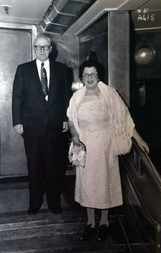
In September 1954, as a retiree, he took another trip to Europe, this time traveling with his wife Carolyn. They sailed to Rotterdam from New York, beginning a European sojourn that lasted nearly two years; a second passenger manifest in June 1956 shows that the couple returned to New York from Southampton, having most recently been staying in London.(7)
From the 1950s through the 1970s, there are local newspaper items reporting Hans “Hugh” and Carolyn’s travels back to Calumet to stay connected with old friends, and visits of C. L. Sievers to Minneapolis to see his brother. Carolyn died in 1968, and sometime in his later years Hans “Hugh” married for a third time, to a woman named Edna Estelle, but Sievers’s descendants report that this late marriage was troubled and led to family strife.
The later lives of the other individuals in the life of Hans “Hugh” are as follows:
• After the death of son Buerdett’s wife Marguerite Scanlon, in 1980, he remarried to Catherine Boyer Ramsden (1905-2005), herself a widow. At the time of Buerdett’s death in 1987, he was the owner of a resort in the Minneapolis area. His son Farrell Patrick Sievers — he whose given name apparently honors his grandmother and her too-early death — earned a PhD and worked as a teacher and school psychologist, also in Minneapolis. Catherine Boyer Ramsden Sievers lived to the age of 100.
• At the time of his 1941 marriage, son Hugh Thomas was working in a retail men’s clothing store, but by 1943 he was studying at a local Minneapolis university. Although he worked in sales for a period of time (selling household storm windows), he eventually became a pilot for Northwest Airlines. Unlike his half-brother Buerdett, Hugh Thomas died young, at age 50, in 1966, but his wife Thelma Mae Merritt Sievers lived to the age of 94.
• Dr. C. L. Sievers relocated shortly after 1920 from Calumet to Denison, Crawford County, Iowa (about 75 miles south of Calumet), where he continued to practice medicine. It may be that Hans and C. L.’s 1921 trip to Europe, mentioned above, was a trip to mark this change. Shortly after C. L. moved to Crawford County, he married Gladys Wilhelmina Nelson (1900-1966), and the couple had one son, Allan Richard Sievers (1923-1999). C. L. Sievers died unexpectedly of a heart attack, on 3 November 1953, at the age of 77.
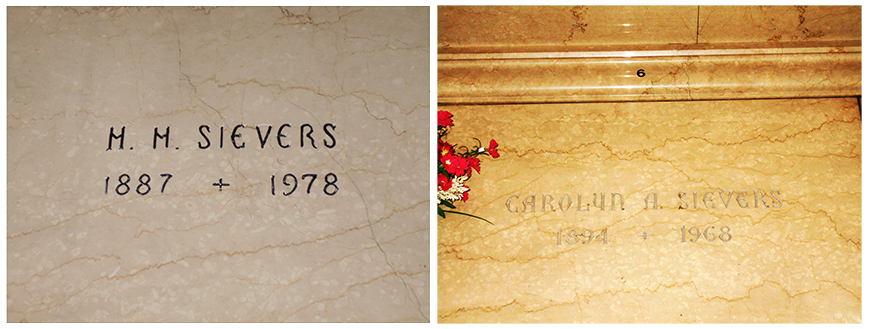
Hans “Hugh” Sievers and his spouses Carolyn and Edna are buried at Sunset Memorial Park Cemetery in Minneapolis, Minnesota. Sievers’s first wife, Ferrol Mintha Gillespie, is buried in O’Brien County, Iowa, in Doyle Cemetery of Highland Township.

Subscribers to Ancestry.com may wish to further explore some family connections of Hans “Hugh” Sievers by accessing an Ancestry profile page (within the context of a “Mugge Family Tree”).
Connection to Other Band Members
Hans Henry “Hugh” Sievers is among very few Calumet German Band members who is not known to have had a family connection with other bandmates. However, a number of band members and their families would almost certainly have been provided with medical care by Hans’s brother, Dr. C. L. Sievers, who owned and operated the Calumet hospital from as early as 1909 through the 1920s.
Footnotes
(1) Although the day of Sievers’s birth is known to be 15 December, there is contradictory historical evidence about the year, with most records indicating 1887 but others indicating 1888. Absent an official record of his birth, one must rely on other documentation, of which there is fortunately a large quantity: immigration, naturalization, passport, and draft registration documents; transatlantic passenger manifests; and census records, in addition to personal recollections by his direct descendants. Evidence for the birth year 1887 comes from his cemetery memorial marker, his U.S. naturalization statement, the passenger manifest and statement when he emigrated from Schleswig-Holstein in 1903, his WWII draft registration card, another passenger manifest in 1921, and four U.S. census records. Evidence for 1888 comes from his passport application in March 1921, his WWI draft registration, a passenger manifest from 1956, and one census record. Given all of this, the preponderance of evidence points to 1887 as the more likely birth year.
(2) In some records, Buerdett is listed as “Buerdett C. Sievers” and in other records as “Buerdett M. Sievers,” a discrepancy that is unexplained.
(3) John Wesley Kime, MD (1854-1952) and his wife Sara Pangburn (1858-1931), both medical graduates of the University of Iowa, had come to Fort Dodge to practice general medicine but later specialized in tuberculosis, one of the most dreaded communicable diseases of the time. Kime lectured frequently on tuberculosis and was regionally famous for having developed a regimen of exposure to sunlight, especially through a mechanism of his invention that deployed a large circular mirror of blue glass to concentrate UV radiation and direct it to patients’ chests. Kime’s theory was that sunlight was both curative and preventative for tuberculosis. A profile of Kime, published in The Des Moines Sunday Register, 11 October 1925, offered a sensational and provocative summary of the doctor’s work. In words that by later sensibilities would be considered both lurid and deeply offensive, the newspaper headlined the article “Ft. Dodge Doctor Would Make Iowans Healthy as Nude Africans; Bathing in Sunlight Says Dr. J. W. Kime Will Develop Immunity to Tuberculosis Which Savages Possess.” A common misperception of the time, even among medical professionals, was that certain populations of people in Africa held innate immunity to tuberculosis or that aspects of their lifestyle conferred acquired immunity. This was a myth, but it led to theories and treatments such as those of Kime. In the article, Kime is quoted as saying, again in dated and uninformed language, that “If we all lived like Hottentots we would be healthier.”
(4) The trial was closely covered by a number of local newspapers, including The Brainerd Daily Dispatch (Brainerd, MN), The Star Tribune (Minneapolis, MN), The Minneapolis Star, and The Minneapolis Journal. Among many examples of relevant newspaper articles published in July 1926 and again in May 1931 are the following. (Access will require a subscription to Newspapers.com, a division of Ancestry.com.) The Brainerd Daily Dispatch, 9 Jul 1926, “Sievers on Trial for Bank Wrecking”; The Brainerd Daily Dispatch, 16 Jul 1926, “Plot to Take Life of the County Atty.”; The Minneapolis Star, 16 July 1926, “Buffalo Banker Gets 10 Years”; The Minneapolis Journal, 1 May 1931, “U.S. Dismisses Bank Case Against Sievers”
(5) The name variation in the records — “Hans Henry Sievers,” “Hans H. Sievers,” “H. H. Sievers,” “Hugh Henry Sievers,” “Hugh H. Sievers” — presents a difficult research problem. Even the disambiguation of individuals with the full name “Hans Henry Sievers” is problematic in this region and era; for example, a different Hans Henry Sievers died on 17 February 1952 in Mower County, Minnesota.
(6) Note that the given name “Farrell” apparently — and touchingly — honors Buerdett’s mother, Ferrol Mintha Gillespie, who had died when Buerdett was three and a half years old.
(7) On both the outbound and return passenger manifests, he is listed as “Hans H.” rather than “Hugh,” seeming to revert to the name he preferred earlier in his life. But this may reflect only the need to match the name on his passport.

